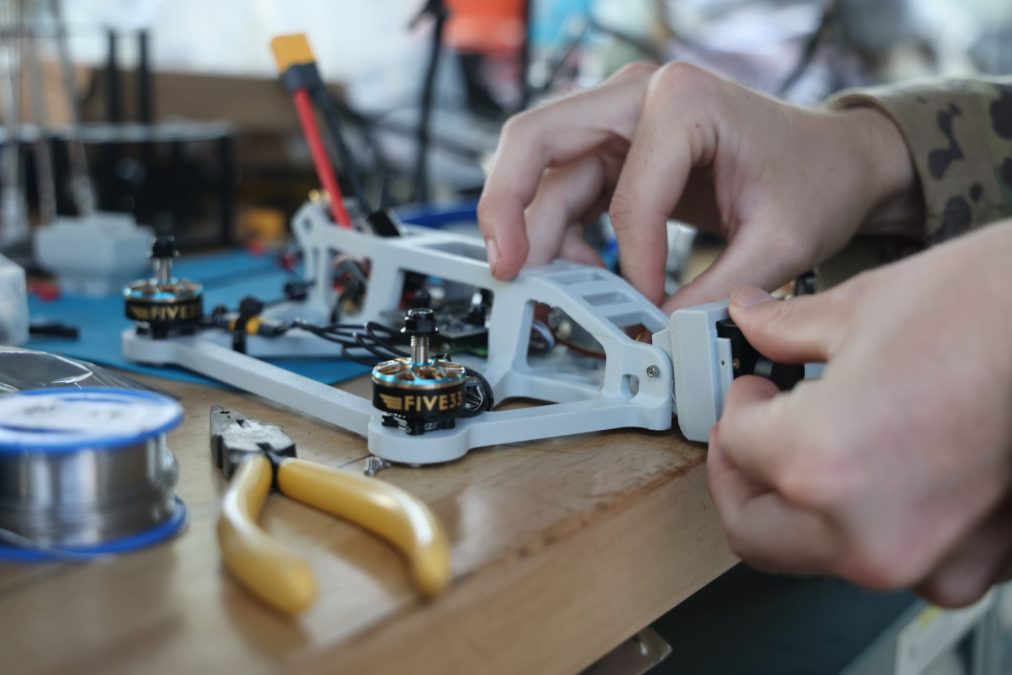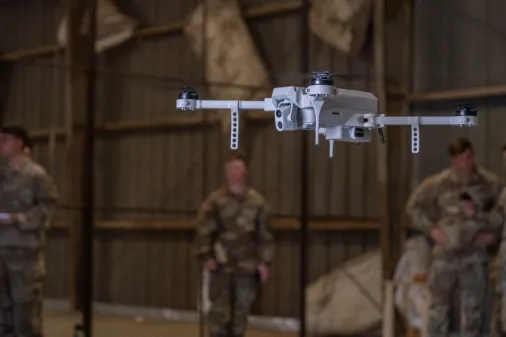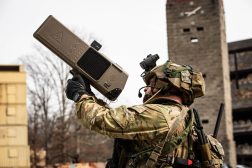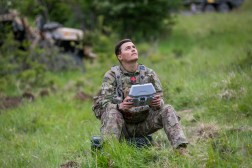25th Infantry Division testing forward-deployed 3D printers in the Pacific

As part of its training rotation in the Philippines, the U.S. Army’s 2nd Mobile Brigade Combat Team, 25th Infantry Division is experimenting with 3D printers to repair parts and build new systems, namely, drones.
The brigade is participating in the Joint Pacific Multinational Readiness Center Exportable exercise in the Philippines with that nation’s 7th and 5th Infantry Divisions and an Australian infantry element. The unit was one of the first three brigades to participate in the first iteration of the Army’s so-called transforming-in-contact initiative, which aims to speed up how the service buys technologies and designs its forces by injecting emerging capabilities into units and letting them experiment with them during exercises and deployments.
TiC 1.0 was centered around light units. But now, TiC 2.0 is focusing on divisions as a whole, to include enabling units such as artillery and air cavalry brigades, as well as Multi-Domain Task Forces, some Army special operations units, National Guard units and armored formations.
Experimenting with 3D printing assets forward in theater is providing not only valuable lessons, but increasing the combat capability for 2nd Brigade and the 25th ID as a whole.
“The closer we can get that capability to the edge or that capability as close as we can to the soldiers that are employing it and realizing where adjustments need to be made, the quicker we can innovate and improve overall lethality,” Maj. Gen. Marcus Evans, commander of 25th Infantry Division, said in an interview Tuesday.
In one example, Evans said soldiers provided a recommendation for modifying a piece of equipment that the 3D printing was able to repair and make the modifications. He added while that was just one small example, the possibilities are endless.
This was a lesson directly from the European theater and Ukraine’s war with Russia. The Ukrainian army is providing, in many instances, a bevy of case studies for how future conflict will be fought and how tactical victories can be achieved.
By some estimates, there are thousands of drones flying on the battlefield, either for reconnaissance or as one-way attack weapons. The ability to rapidly repair or build new devices at the pace of operations has been critical.
Such a capability will also be needed in the Pacific theater, given the complex environment of various islands that forces will need to operate from, across vast distances. Forward-placed 3D printers will enable forces to maintain capabilities without long supply lines.
“It provides agility, it provides redundancy, and allows us to diversify our supply lines. From a commander perspective, all of those increase the ability to protect ourselves and project lethal formations and sustain lethal formations without always having to rely on an elongated supply line, which, as you’re aware, is very [susceptible] to interdiction to various kinds of attacks,” Evans said. “Now you’ve essentially moved a sustainment capability as far forward as possible and placed it organic to a formation that is doing the majority of the training and the focusing on lethality.”
The division is in the early stages of figuring out how to employ such a capability, to include how to maneuver it and protect it from being targeted by the enemy.
“A consideration is we know that that capability will be targeted. We have to understand how we move it, we have to understand how we protect it, how we get it into positions where it can hide in plain sight and continue to support soldiers,” Evans said.
On the flip side, he said they’re maturing counter-drone capabilities as well. While the Army has been experimenting a lot with commercial unmanned aerial systems, counter-UAS poses much more significant challenges given there aren’t many advanced commercial solutions available.
2nd Brigade improved its ability to detect and defend itself from incoming drones from its combat training center rotation in October in Hawaii.
For example, in one instance, a multi-domain reconnaissance team had activated a counter-UAS sensor notifying them of incoming drones approximately 15 minutes out. They were able to adjust their camouflage, preventing the enemy UAS from finding them.
Roughly 24 hours later, the unit was able to passively defeat another incoming drone, returning it to its control station.
“That is one small example of something we were not as proficient at in October, but we’ve certainly seen an increase in the use capability and understanding of employing that counter-UAS mechanism,” Evans said.
The division is also working on improving how it sees itself within the electromagnetic spectrum. There continues to be increased requirements for electronic warfare and counter-drone capabilities, Evans noted.
“The ability to scale and provide as many command posts and units in the field coverage, both from in the electromagnetic spectrum and also from the counter-UAS capability,” is important, he said. Since last October, “we have received additional equipment in terms of electronic warfare and in terms of counter-UAS equipment, which we have been able to employ here, generally, pretty effectively.”
EW tools can also be used in the counter-drone realm to jam signals.
Moreover, understanding a unit’s signature will allow it to be more nimble against enemies and make better decisions regarding how it maneuvers on the battlefield or deceives adversaries.
“All of this comes back to being able to gain positions of advantage, both tactically and operationally, to gain the benefits of employing those assets, whether it’s conduct electronic warfare in an attack mode or being able to see yourself so you can take actions to protect yourself and your formations. Those actions could be passive camouflage or they could be active deception measures,” Evans said.






